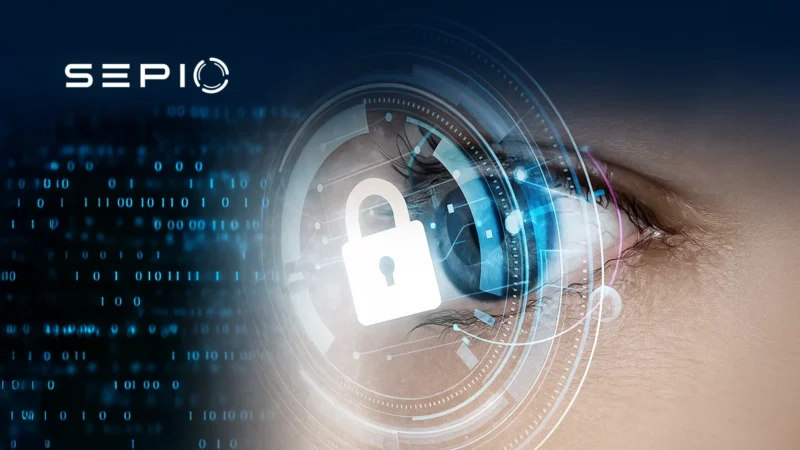This report explores the crucial role of Zero Trust Hardware in cybersecurity, with an introduction to the Sepio Asset Risk Management commercial platform.
The cybersecurity industry often adopts broad concepts that effectively address security challenges. Principles such as multifactor authentication, least privilege access, segregation of duties, and automated correlation of indicators of compromise (IOC) form the foundation of cybersecurity. Among these, Zero Trust Hardware plays a vital role in strengthening defenses.
One of the most widely accepted security models today is Zero Trust. Originally introduced in an industry analyst report, Zero Trust promotes network architectures that move beyond traditional firewall-protected perimeters. This approach is particularly relevant for end users accessing public cloud workloads, where neither party, user nor cloud, can fully trust the other, necessitating strong security controls.
While much attention has been given to zero trust architectures focusing on software-based security controls, for endpoints, networks, cloud infrastructure, and containerized applications, the hardware aspect of Zero Trust implementation remains underexplored. Zero Trust Hardware ensures the integrity of endpoints, servers, and connected devices, making zero trust hardware access a critical component in modern cybersecurity strategies.
Applying Zero Trust to Hardware
Integrating Zero Trust Hardware into an enterprise zero trust strategy is essential for securing endpoints and other physical computing systems. As zero trust architectures eliminate traditional network perimeters, hardware security becomes critical to prevent unauthorized access and threats at the physical layer.
To effectively implement zero trust hardware access, hardware security must address three key areas:
Hardware-Level Visibility
The first priority is improving the accuracy and scope of metadata used to assess hardware within a zero trust session. Comprehensive asset visibility ensures that only authorized devices participate in business activities within a zero trust network. Achieving this requires Layer 1 data collection from both known and unknown peripherals in the target environment.
Hardware Identity Management
Once metadata is collected, the next step is using this information for hardware identity verification. Devices can provide critical physical and electrical data that reveal their identity. Unique identifiers, such as hardware fingerprints, help ensure that only trusted devices gain access to secure systems.
Hardware Access Control
The final step involves making cyber risk-based access control decisions about whether a hardware device should be granted access to a workload. This includes detecting potential rogue or impersonating devices. Many zero trust hardware access strategies implement machine learning-based analysis on centralized management servers to enhance security.
Ignoring hardware in zero trust implementations leads to critical security gaps, as valuable metadata goes unnoticed. While zero trust primarily focuses on software controls, incorporating hardware visibility, identity management, and access control strengthens network security.
Sepio Approach to Zero Trust Hardware
Enhanced Hardware Visibility for Zero Trust
Sepio’s platform offers real-time and accurate visibility into deployed hardware devices, providing a comprehensive view that goes beyond traditional IT inventories. By using a unique fingerprinting algorithm based on physical layer visibility, organizations gain valuable insights into their hardware assets. This enhanced visibility is critical for ensuring the integrity of devices in a zero trust environment.
Securing Access in a Zero Trust Environment
Hardware security plays a vital role in enforcing zero trust access policies. Sepio’s platform ensures that only trusted devices with verified fingerprints are granted access to critical resources. By eliminating reliance on perimeter-based security, organizations can achieve a truly robust zero trust architecture, where every device and user is continuously verified.
Mitigating Rogue Device Risks
One of the key challenges in zero trust implementation is the presence of rogue or fake devices. Sepio’s solution helps organizations identify and mitigate such risks by detecting suspicious fingerprints or behaviors. This proactive approach to rogue device detection adds an additional layer of security to safeguard networks and protect against unauthorized access attempts.

In this report, we explore the zero trust model in the context of underlying hardware, with a focus on endpoint protection and monitoring. We highlight how hardware security can prevent the inclusion of rogue or fake devices and how this strengthens overall cybersecurity efforts.
By understanding and implementing zero trust hardware principles, organizations can bolster their defenses and ensure that only trusted devices gain access to critical systems.
Enhancing Hardware Access Control
Every enterprise security team is encouraged to take immediate action to improve their hardware access control in the context of a zero trust environment. While each organization has unique circumstances and security postures, the following methodology provides a flexible framework that can be tailored to specific needs.
Organizations should begin by reviewing their existing access policies, which likely involve identity-based mediation. These policies should be examined for uniformity across the enterprise, ensuring consistency in identity-related information. It is essential to verify that the policies are suitable for both zero trust and least privilege principles.
The next step is to define a set of functional requirements for hardware access control policies. This is an important area to include within the organization’s security framework. Even if the organization is only focused on identifying rogue devices, full hardware access support should be considered to ensure comprehensive coverage.
Talk to an expert to explore how Sepio’s platform enhances hardware visibility and enables proactive detection of rogue devices. Safeguard your network, protect your critical resources, and adopt a comprehensive Zero Trust Hardware approach for a more secure future.
Download Zero Trust Hardware Access Report (pdf)



